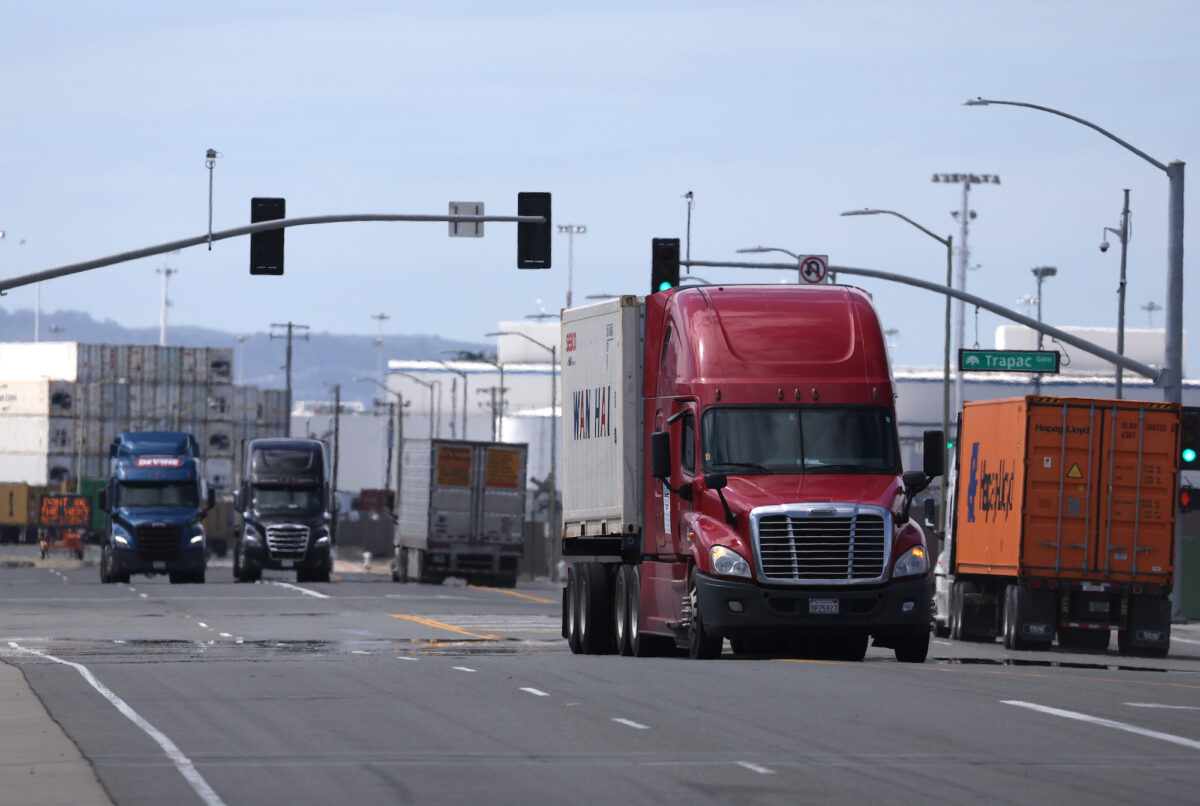


California state air regulators and truck and engine manufacturers said on Thursday they had agreed on state emissions rules that will give companies more flexibility to meet requirements.
The California Air Resources Board (CARB) said the “Clean Truck Partnership” with the Truck and Engine Manufacturers Association (EMA) includes new flexibility for manufacturers to meet emissions requirements while reaching state goals for reducing emissions.
“California has shown the world what real climate action looks like, and we’re raising the bar again. Today, truck manufacturers join our urgent efforts to slash air pollution, showing the rest of the country that we can both cut dangerous pollution and build the future economy,” California governor Gavin Newsom said in a statement.
In March, the U.S. Environmental Protection Agency (EPA) approved California’s plans to require a rising number of zero-emission heavy-duty trucks. Governor Newsom said on Twitter in March that “half of all heavy-duty trucks sold in California will be electric by 2035.”
California plans to mandate by 2045 that all medium- and heavy-duty vehicle operations be zero emission where feasible, shifting away from diesel-powered trucks.
CARB said it will align its rules with the EPA 2027 regulations for nitrogen oxide (NOx) emissions. The board also agreed to provide no less than four years of lead time and at least three years of regulatory stability before imposing new requirements.
“The unprecedented collaboration between California regulators and truck manufacturers marks a new era in our zero-emission future, where we work together to address the needs of both the trucking industry and the Californians who deserve to breathe clean air,” CARB chair Liane Randolph said in a statement. “This agreement makes it clear that we have shared goals to tackle pollution and climate change and to ensure the success of the truck owners and operators who provide critical services to California’s economy.”
California said Thursday it agreed to modify elements of the 2024 NOx emission regulations for which manufacturers will provide offsets to maintain California emission targets.
“Through this agreement, we have aligned on a single nationwide nitrogen oxide emissions standard, secured needed lead time and stability for manufacturers, and agreed on regulatory changes that will ensure continued availability of commercial vehicles,” Engine Manufacturers Association president Jed Mandel said in a statement.
California has achieved its goal of 1.5 million zero-emissin vehicles (ZEVs) sold in the state two years ahead of schedule, with 21.1 percent of all new cars sold this year in California being ZEVs, according to the California Energy Commission, and 40 percent of ZEVs sold in the United States are sold in California, according to the Veloz EV Markeet Report.
The state is investing $10 billion toward the ZEV transition through the California Climate Commitment, including ZEV trucks and infrastructure.
Truck and Engine Manufacturers Association members have vehemently opposed California’s request, stressing that while they “support a program that can be a successful bridge to a zero-emission commercial vehicle future,” that plan “is not technologically feasible.”
Earlier this month, Iowa and 19 other states filed a lawsuit against the EPA for backing California’s future ban on heavy diesel vehicles in a purported attempt to regulate traditional trucking “out of existence through mandating net-zero emissions standards.”
The 51-page legal action against the EPA and its administrator, Michael Regan (in his official role), was filed on June 5 in the U.S. Court of Appeals of the District of Columbia by Iowa attorney general Brenna Bird.
“Iowa isn’t going to take a back seat as the EPA and California try to regulate truckers out of business. We’re pushing back,” Ms. Bird announced. “The EPA and California have no right or legal justification for forcing truckers to follow their radical climate agenda.”
One of America’s biggest truck companies, Ford Motors, said the company is committed to improving air quality by producing more environmentally friendly vehicles.
“Ford remains committed to working collaboratively with the California Air Resources Board and the Truck and Engine Manufacturers Association. During this extraordinary transition period in the automotive industry, automakers need harmonization between programs to help meet our shared goal of lowering emissions from transportation to improve air quality, human health, and the environment. This alignment between California and the Environmental Protection Agency’s national standards for model year 2027 and beyond will help us get more clean trucks on the road across the country,” Cynthia Williams, global director of sustainability, homologation, and compliance at Ford Motor Company, said in a statement.
